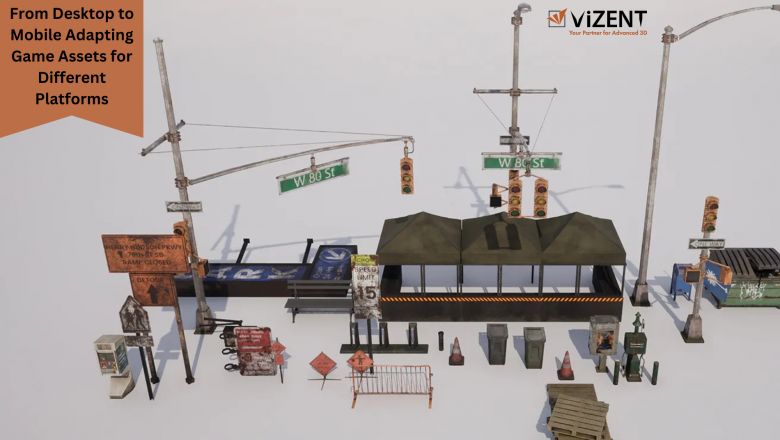views
As the gaming industry continues to expand, the demand for seamless experiences across platforms is more critical than ever. Whether you’re designing for desktop or mobile, adapting game assets effectively ensures that players receive an optimized and visually stunning experience. This blog explores the challenges, strategies, and best practices for adapting 3D modeling games, game assets, and 3D game environments to different platforms.
Understanding the Challenges of Multi-Platform Asset Development
Game developers often face unique challenges when porting assets between desktop and mobile platforms:
- Hardware Limitations: Desktop systems generally have superior processing power, more RAM, and advanced GPUs compared to mobile devices. This disparity requires downsizing textures, reducing polygon counts, and optimizing shaders.
- Screen Resolution and Aspect Ratios: While desktops often support higher resolutions and varied aspect ratios, mobile devices have smaller screens, making UI design and asset clarity critical.
- Battery and Performance Constraints: Mobile gaming must balance graphical fidelity with energy efficiency, requiring lighter 3D game environments and game assets that consume fewer resources.
Best Practices for Adapting Game Assets
-
Optimize 3D Models:
-
Reduce polygon counts without sacrificing visual fidelity.
-
Use Level of Detail (LOD) systems to load higher-quality models only when necessary.
-
Replace high-poly models with baked textures to achieve similar visual effects on mobile.
-
Texture Optimization:
-
Compress textures to reduce file size and memory usage.
-
Use lower-resolution textures for mobile while maintaining sufficient clarity.
-
Implement texture atlasing to combine multiple textures into a single map, reducing draw calls.
-
Efficient Shading and Lighting:
-
Use simplified shaders and pre-baked lighting for mobile platforms.
-
Implement real-time lighting sparingly to avoid performance bottlenecks.
-
Asset Scaling:
-
Scale game assets appropriately for smaller mobile screens.
-
Adjust UI elements and interactive features to ensure usability.
-
Cross-Platform Tools:
-
Utilize game engines like Unity or Unreal Engine, which offer platform-specific optimization settings.
-
Use middleware tools to automate asset adjustments for various platforms.
Adapting 3D Game Environments for Mobile
Creating immersive 3D game environments for mobile involves additional considerations:
- Simplify Environments: Minimize the number of objects and complex geometry in scenes.
- Texture Efficiency: Prioritize reusable assets and modular textures.
- Streaming Assets: Load assets dynamically to reduce initial loading times and memory usage.
- Physics Optimization: Reduce the number of dynamic physics objects to avoid lag.
Testing and Iteration
Thorough testing across multiple devices is essential to ensure that assets perform well on both desktop and mobile platforms. Consider the following:
- Device-Specific Testing: Test on a range of devices with varying hardware capabilities.
- Performance Metrics: Use tools to monitor frame rates, memory usage, and battery consumption.
- User Feedback: Incorporate user feedback to refine asset performance and visuals.
Case Study: A Mobile Port Success Story
Consider a hypothetical case where a team successfully ports a 3D modeling game from desktop to mobile. By implementing LOD for character models, compressing textures, and using pre-baked lighting, they reduce asset sizes by 40% while maintaining visual quality. Their efforts lead to a smooth 60 FPS gameplay experience on mid-range mobile devices, proving the value of careful optimization.
Conclusion
Adapting game assets for different platforms is a complex but rewarding process that bridges the gap between powerful desktop systems and portable mobile devices. By leveraging optimization techniques for 3D modeling games, game assets, and 3D game environments, developers can deliver consistent, high-quality experiences across platforms. Whether you’re a seasoned professional or an aspiring 3D game artist, understanding these practices is key to creating versatile and successful games.






















Comments
0 comment